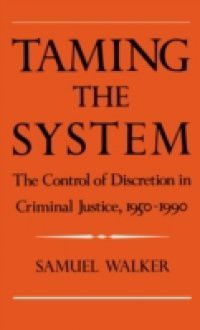It is a truism that the administration of criminal justice consists of a series of discretionary decisions by police, prosecutors, judges, and other officials. Taming the System is a history of the forty-year effort to control the discretion. It examines the discretion problem from the initial "discovery" of the phenomenon by the American Bar Foundation in the 1950s through to the most recent evaluation research on reform measures. Of enormous value to scholars, reformers, and criminal justice professionals, this book approaches the discretion problem through a detailed examination of four decision points: policing, bail setting, plea bargaining, and sentencing. In a field which largely produces short-ranged "evaluation research," this study, in taking a wider approach, distinguishes between the role of administrative bodies (the police) and evaluates the longer-term trends and the successful reforms in criminal justice history.

















